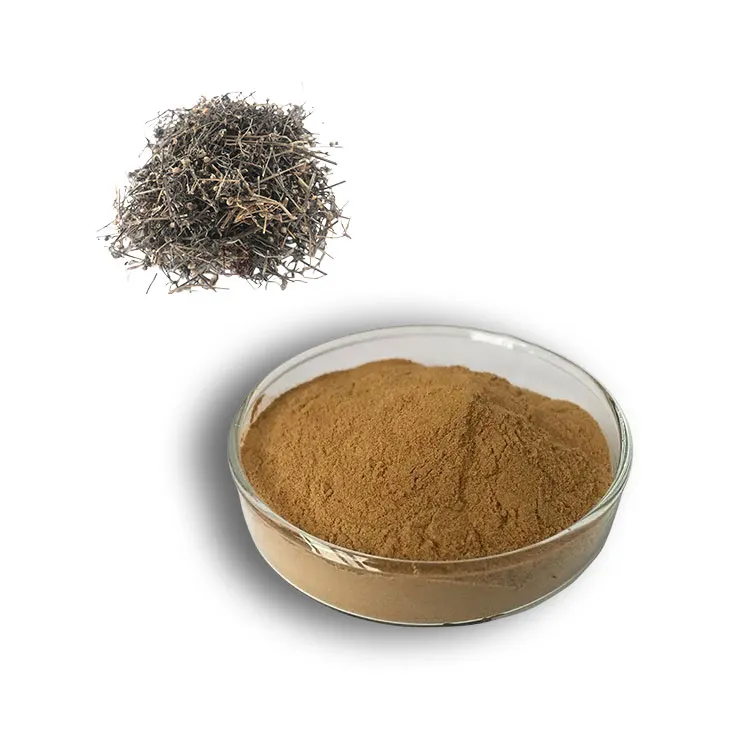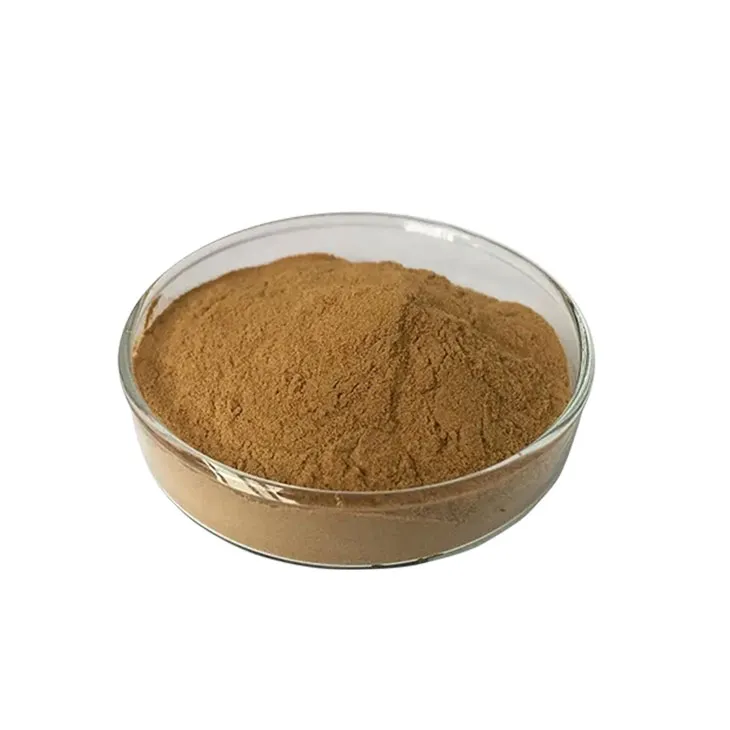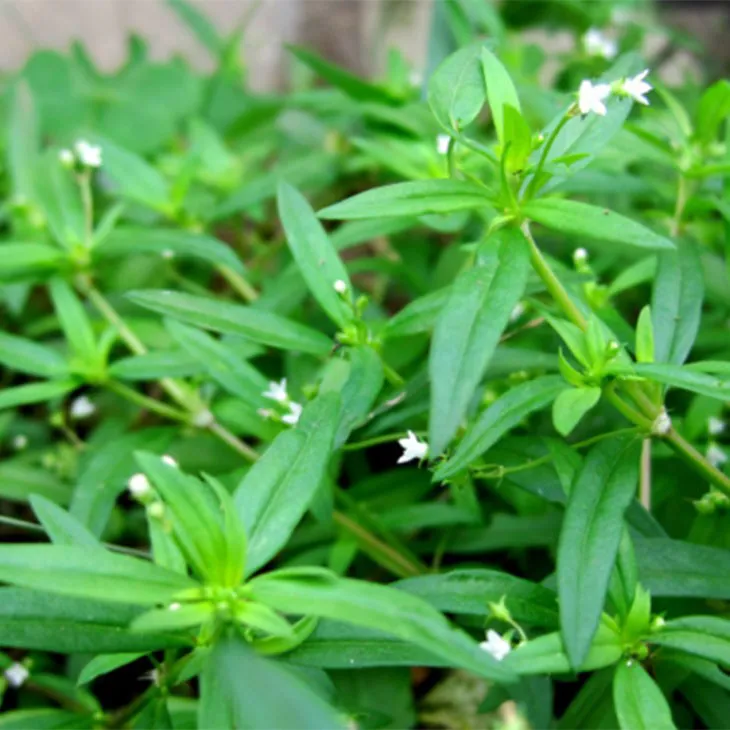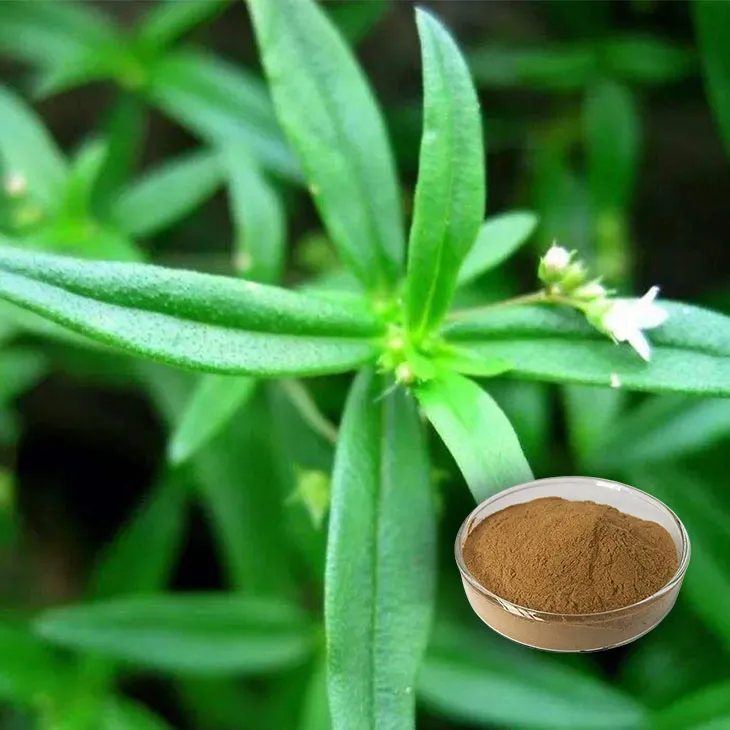- 0086-571-85302990
- sales@greenskybio.com
The flavor of mature Hedyotis diffusa and natural Hedyotis diffusa extract.
2024-11-13

1. Introduction
Hedyotis diffusa is a well - known plant in traditional medicine. Understanding the flavor of the mature plant and the properties of its natural extract is of great significance. This article aims to comprehensively explore these aspects, including the taste characteristics of the mature Hedyotis diffusa and the important bioactive compounds in its natural extract, as well as their applications in different fields.

2. The Flavor Profile of Mature Hedyotis diffusa
2.1 Factors Influencing the Flavor
The flavor of mature Hedyotis diffusa is a complex outcome of multiple factors during its growth. Soil composition, for example, plays a crucial role. If the soil is rich in certain minerals, it can affect the plant's metabolism and thus influence its flavor. Another important factor is the climate. Different temperature, humidity, and sunlight conditions can lead to variations in the production of secondary metabolites in the plant, which in turn impacts the taste.
2.2 Taste Descriptions
The taste of mature Hedyotis diffusa is often described as a complex combination. It has a slightly bitter taste, which is mainly due to the presence of some alkaloids and phenolic compounds. However, it also has a hint of herbal freshness. This freshness can be attributed to the volatile oils and certain terpenoids present in the plant. When tasted, one can first detect the bitterness, which then gives way to a refreshing aftertaste, leaving a clean and somewhat "green" feeling on the palate.
3. Natural Hedyotis Diffusa Extract
3.1 Bioactive Compounds in the Extract
The natural extract of Hedyotis diffusa contains a rich array of bioactive compounds. One of the important groups is flavonoids. Flavonoids are known for their antioxidant properties. They can scavenge free radicals in the body, reducing oxidative stress. Another group is alkaloids, which may have potential pharmacological effects such as anti - inflammatory and analgesic activities. Triterpenoids are also present in the extract, and they are often associated with anti - tumor and immunomodulatory functions.
3.2 The Extraction Process
The extraction process is crucial to preserve the integrity and effectiveness of these bioactive components. There are several common extraction methods. Solvent extraction is one of the traditional methods. Ethanol or methanol is often used as a solvent to extract the active compounds from the plant material. Another method is supercritical fluid extraction, which uses supercritical carbon dioxide as the extraction medium. This method has the advantage of being more environmentally friendly and can produce a purer extract. However, it also requires more sophisticated equipment.
4. Differences between the Taste of the Whole Plant and the Extract
4.1 Taste Variations
The taste of the whole plant of Hedyotis diffusa is different from that of its extract. The whole plant has a more complex and raw flavor due to the presence of various tissues and components in their natural state. The bitterness may be more pronounced, and the freshness is more closely associated with the plant's physical structure. In contrast, the extract has a more concentrated flavor. The extraction process often concentrates the bioactive compounds, which can intensify the taste. For example, the bitterness in the extract may be more intense because the alkaloids are more concentrated.
4.2 Implications for Applications
These taste differences have implications for their applications in traditional medicine and modern research. In traditional medicine, the whole plant may be used in herbal preparations where the complex flavor is part of the overall therapeutic experience. For example, in some traditional Chinese medicine prescriptions, the whole Hedyotis diffusa plant is decocted, and the resulting herbal tea has a unique taste that is believed to be related to its medicinal effects. In modern research, the extract is often used in the development of pharmaceutical products. The more concentrated and purified extract can be more precisely dosed, and its taste can be modified through formulation techniques to make it more acceptable for patients.
5. Applications in Traditional Medicine
5.1 Traditional Chinese Medicine
In traditional Chinese medicine, Hedyotis diffusa has a long history of use. It is often used in prescriptions for treating various diseases, especially those related to inflammation and heat syndromes. The bitter and fresh flavor of the plant is thought to have a "clearing heat" and "detoxifying" effect. For example, in the treatment of some skin infections or febrile diseases, Hedyotis diffusa may be combined with other herbs to form a complex formula. The whole plant is usually decocted, and the patient drinks the resulting herbal decoction.
5.2 Other Traditional Medicine Systems
In other traditional medicine systems as well, Hedyotis diffusa has been used. In some Southeast Asian traditional medicine, it is used for similar purposes as in traditional Chinese medicine. However, the preparation methods and the way it is combined with other herbs may vary slightly. The unique flavor of the plant is still an important factor in these traditional uses, as it is often associated with the plant's perceived medicinal properties.6. Applications in Modern Research
6.1 Pharmaceutical Research
In modern pharmaceutical research, the natural extract of Hedyotis diffusa has attracted much attention. Scientists are exploring its potential in developing new drugs. The bioactive compounds in the extract, such as alkaloids and flavonoids, are being studied for their pharmacological activities. For example, researchers are investigating whether the anti - inflammatory compounds in the extract can be developed into drugs for treating chronic inflammatory diseases like rheumatoid arthritis. The more concentrated nature of the extract allows for more accurate in - vitro and in - vivo studies.
6.2 Nutraceutical and Cosmetic Research
In the field of nutraceuticals, the antioxidant properties of Hedyotis Diffusa Extract make it a potential ingredient for health - promoting products. It can be added to dietary supplements to help consumers combat oxidative stress. In the cosmetic industry, the extract may be used in skincare products. The anti - inflammatory and antioxidant effects can be beneficial for maintaining skin health, reducing inflammation, and preventing premature aging. The taste of the extract may not be as crucial in these applications as in pharmaceutical products, but it still needs to be considered in product formulation to ensure overall product acceptability.7. Conclusion
The flavor of mature Hedyotis diffusa, with its slightly bitter and fresh taste, is a result of various factors during its growth. The natural extract of the plant contains valuable bioactive compounds with potential medicinal and other beneficial properties. The differences between the taste of the whole plant and the extract are related to their different compositions and have implications for their applications in traditional medicine and modern research. Understanding these aspects can help us better utilize Hedyotis diffusa in both traditional and modern contexts, and further research may uncover more potential applications of this remarkable plant.
FAQ:
What are the main factors influencing the taste of mature Hedyotis diffusa?
The taste of mature Hedyotis diffusa is influenced by multiple factors. These include the soil conditions in which it grows, the amount of sunlight it receives, and the climate of the region. Different soil compositions can affect the nutrient uptake of the plant, which in turn may change its flavor. Adequate sunlight is crucial for the plant's growth and can also impact the development of its taste. Additionally, the climate, such as temperature and humidity, can play a role in determining whether the taste is more pronounced in terms of bitterness or herbal freshness.
What bioactive compounds are present in the natural Hedyotis Diffusa Extract?
The natural Hedyotis diffusa extract contains a variety of bioactive compounds. Some of the important ones are flavonoids, which are known for their antioxidant properties. There are also phenolic acids, which can contribute to anti - inflammatory effects. Additionally, alkaloids may be present, which could have potential pharmacological activities. These bioactive compounds work together to give the extract its potential medicinal value.
How is the extraction process of Hedyotis diffusa carried out to preserve the effectiveness of its components?
The extraction process of Hedyotis diffusa typically involves several careful steps. Firstly, the plant material is carefully selected and cleaned to remove any impurities. Then, methods such as solvent extraction may be used. The choice of solvent is crucial; for example, ethanol or water - based solvents are often considered. The extraction is usually carried out at controlled temperatures and for a specific duration to ensure that the bioactive compounds are not degraded. After extraction, purification steps may be involved to separate the desired components from other substances, thus preserving the integrity and effectiveness of the components.
What are the differences in taste between the whole plant of Hedyotis diffusa and its extract?
The whole plant of Hedyotis diffusa may have a more complex and raw taste. It can have a stronger earthy and bitter flavor due to the presence of all parts of the plant, including the roots, stems, and leaves. In contrast, the extract's taste may be more concentrated in certain aspects. The extraction process can sometimes mellow out some of the harsher flavors of the whole plant. The extract may also have a more pronounced flavor related to the dominant bioactive compounds, which might be different from the overall taste of the whole plant.
How are the taste of Hedyotis diffusa and its extract related to their applications in traditional medicine?
In traditional medicine, the taste of Hedyotis diffusa is often associated with its medicinal properties. The bitter taste, for example, was sometimes thought to indicate its ability to cleanse" or have detoxifying effects. The herbal freshness might be related to its use in promoting general well - being. For the extract, its more concentrated form and potentially different taste are related to its more targeted applications. The anti - inflammatory and antioxidant properties associated with the extract's taste are utilized in treating various ailments in traditional medicine. In modern research, the understanding of these tastes and their relationship to the plant's components is further explored to develop more effective medicinal products.
Related literature
- "Study on the Chemical Components and Pharmacological Effects of Hedyotis diffusa"
- "The Bioactive Compounds in Hedyotis diffusa: A Comprehensive Review"
- "Taste and Medicinal Properties of Hedyotis diffusa: Traditional and Modern Perspectives"
- ▶ Hesperidin
- ▶ Citrus Bioflavonoids
- ▶ Plant Extract
- ▶ lycopene
- ▶ Diosmin
- ▶ Grape seed extract
- ▶ Sea buckthorn Juice Powder
- ▶ Fruit Juice Powder
- ▶ Hops Extract
- ▶ Artichoke Extract
- ▶ Mushroom extract
- ▶ Astaxanthin
- ▶ Green Tea Extract
- ▶ Curcumin
- ▶ Horse Chestnut Extract
- ▶ Other Product
- ▶ Boswellia Serrata Extract
- ▶ Resveratrol
- ▶ Marigold Extract
- ▶ Grape Leaf Extract
- ▶ New Product
- ▶ Aminolevulinic acid
- ▶ Cranberry Extract
- ▶ Red Yeast Rice
- ▶ Red Wine Extract
-
Fenugreek Extract Powder
2024-11-13
-
Bayberry Extract
2024-11-13
-
Cat Claw Extract
2024-11-13
-
Honeysuckle Pollen
2024-11-13
-
Hesperidin
2024-11-13
-
Black Rice Extract
2024-11-13
-
Almond Extract Powder
2024-11-13
-
Withania Somnifera Extract
2024-11-13
-
Elderberry Extract
2024-11-13
-
Citrus Aurantii Extract
2024-11-13





















